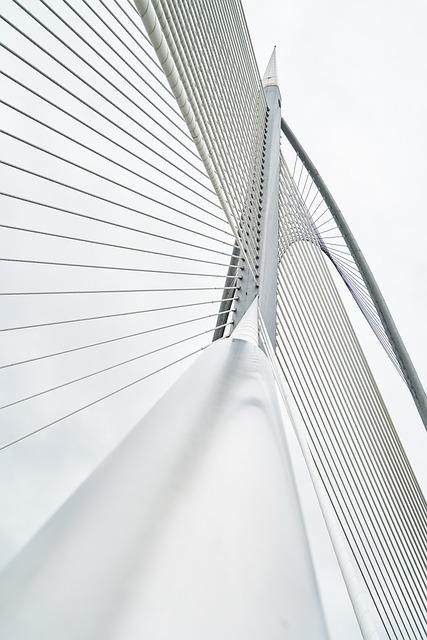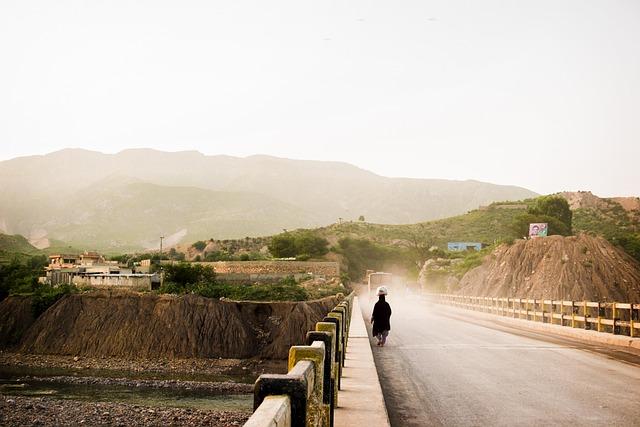Revitalizing Pakistan: The Future of National Infrastructure
As the dawn of a new era breaks over Pakistan, the need for robust and sustainable infrastructure has never been more pressing. With a rich tapestry of history woven into its landscapes, from the bustling markets of Karachi to the serene valleys of Swat, the nation stands at a pivotal crossroads. Visionary policies and innovative projects have the potential to transform its physical framework, setting the stage for socioeconomic growth and enhanced connectivity. However, the journey towards revitalizing Pakistan’s infrastructure is not merely a matter of bricks and mortar; it demands a comprehensive approach that melds tradition with modernity, ambition with practicality. In this exploration, we delve into the current state of national infrastructure, the challenges that lie ahead, and the initiatives poised to lay the groundwork for a brighter, more sustainable future. Join us as we unravel the blueprint for a revitalized Pakistan—a vision where infrastructure serves not just as a foundation but as a catalyst for change.
Innovative Approaches to Sustainable Urban Development
As cities strive to become more livable and resilient, innovative strategies embrace eco-friendly technologies and community-driven initiatives. Cities around the globe are leveraging the power of green architecture, which not only focuses on reducing the carbon footprint but also enhances the well-being of residents. By incorporating features such as green roofs, living walls, and renewable energy systems, urban areas can significantly lower energy consumption while creating vibrant public spaces. Furthermore, smart city solutions harness data analytics and the Internet of Things (IoT) to optimize resource management, leading to improved traffic flow, efficient waste disposal, and better water management.
Engaging local communities in the decision-making process can lead to more inclusive and sustainable urban development. Initiatives that encourage community gardens, public art projects, and participatory design workshops not only help beautify neighborhoods but foster a sense of ownership and pride among residents. Moreover, integrating sustainable public transport options, such as bicycle-sharing programs and electric bus systems, can contribute significantly to reducing urban congestion and pollution. A holistic approach that incorporates these elements will not only enhance the aesthetic appeal and functionality of urban spaces but also ensure that they remain viable for generations to come.

Restructuring Transportation Networks for Economic Growth
In a rapidly globalizing world, a well-structured transportation network is essential for driving economic performance and fostering regional connectivity. Enhancing existing infrastructure and introducing innovative transport solutions can significantly improve the logistics landscape in Pakistan. By investing in multi-modal transport systems, the country can benefit from:
- Improved Freight Efficiency: Reducing delays and ensuring timely deliveries.
- Increased Accessibility: Connecting rural areas to urban centers, enhancing trade opportunities.
- Job Creation: Stimulating local economies through construction and operational jobs.
- Environmental Sustainability: Promoting greener transport options to reduce carbon footprints.
In this transformation, harnessing technology plays a pivotal role. Implementing advanced traffic management systems and smart logistics can streamline operations and reduce congestion on key routes. Furthermore, creating public-private partnerships can mobilize additional funding and create a framework for shared responsibilities. Consider this framework for critical transportation upgrades:
| Initiative | Description | Expected Outcome |
|---|---|---|
| High-Speed Rail Projects | Link major cities to enhance commuter travel. | Reduce travel time and boost productivity. |
| Highway Expansion | Widening major highways to accommodate heavy traffic. | Decreased congestion and better freight movement. |
| Smart Bus Rapid Transit | Implementing dedicated lanes for reliable public transit. | Improved public transport and lower urban air pollution. |

Harnessing Technology for Smart Infrastructure Solutions
As urbanization accelerates, integrating advanced technologies into Pakistan’s infrastructure becomes essential for sustainable development. Smart sensors and IoT devices are now enabling real-time monitoring of traffic flow, energy consumption, and waste management systems. This integration not only contributes to improved efficiency but also enhances public safety. With AI-driven analytics, decision-makers can gain insights into urban trends, making it possible to proactively address issues such as congestion and pollution before they escalate. By employing digital twins, city planners can create virtual models of urban environments, allowing for better planning and resource allocation.
Furthermore, leveraging technology to create smart buildings and renewable energy sources can minimize the ecological footprint of infrastructure projects. Innovations such as solar panels and smart grids allow for increased energy efficiency and sustainability. The implementation of 5G networks will facilitate seamless connectivity, ensuring that smart infrastructure solutions can communicate effectively. Here’s a quick overview of the essential components for developing a smart infrastructure framework:
| Component | Description |
|---|---|
| Smart Sensors | Devices that monitor data in real time for optimized urban management. |
| IoT Integration | Connection of devices to enhance decision-making and responsiveness. |
| AI Analytics | Data analysis tools that support predictive modeling for urban scenarios. |
| Renewable Energy | Use of sustainable energy sources to power infrastructure projects. |

Public-Private Partnerships: A Pathway to Enhanced Investment
Public-private partnerships (PPPs) are essential for driving sustainable economic growth in Pakistan, particularly in infrastructure development. By leveraging the strengths of both sectors, these collaborations can result in innovative solutions to pressing challenges such as inadequate transportation networks and unreliable energy sources. Investing in PPPs not only mobilizes much-needed capital but also enhances efficiency and effectiveness, ensuring that infrastructure projects meet the nation’s evolving needs. The commitment between the government and private entities fosters a shared vision, driven by mutual objectives aimed at revitalizing urban and rural infrastructure.
To maximize the impact of these collaborations, it is crucial to establish a transparent framework that outlines roles, responsibilities, and risk-sharing mechanisms. Elements integral to the success of PPP initiatives include:
- Regulatory Clarity: Streamlined processes and clear guidelines can attract more private investment.
- Incentive Structures: Financial incentives encourage private sector participation and innovation.
- Public Awareness: Educating citizens on the benefits of PPPs fosters community support and engagement.
Furthermore, the successful deployment of PPPs is exemplified by careful project selection and execution. The following table provides an overview of potential infrastructure domains where PPPs could have a transformative impact:
| Infrastructure Domain | Potential Benefits |
|---|---|
| Transportation | Reduced congestion, improved transit times |
| Energy | Increased efficiency, renewable energy adoption |
| Water Supply | Enhanced service delivery, sustainable management |
| Healthcare | Improved facilities, better access to services |
In Conclusion
As we stand at the crossroads of ambition and opportunity, the revitalization of Pakistan’s national infrastructure emerges as a beacon of hope for a prosperous future. The road ahead is woven with challenges — from financial constraints to the pressing need for sustainable development — but within these obstacles lies the potential for innovation and resilience.
Embracing a collaborative approach that includes the voices of local communities, government initiatives, and private investments will be crucial in steering this transformative journey. Together, we can lay the groundwork for a network that not only supports the economy but also enhances the quality of life for every citizen.
As we envision a Pakistan forged anew, let us remember that infrastructure is not just about bricks and mortar; it is the bedrock upon which dreams and aspirations are built. The path to revitalization requires vision, commitment, and a shared responsibility. With each investment in these vital projects, we are not merely constructing roads, bridges, and energy grids; we are paving the way for a future where potential knows no bounds and where every Pakistani has the opportunity to thrive. The time to act is now, and the journey to transformation begins with us all.



